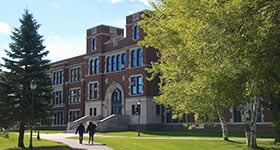News reports and social media are full of stories about school violence, ranging from extreme bullying to school shootings. School administrators and leaders are responsible for finding ways to avoid, mitigate and recover from these incidents, creating detailed plans for students, staff, families and the community. To keep schools safe, building systems must be adequate and functioning, students and staff must be aware of the possibilities for disaster, and districts must provide continuous training for all stakeholders.
The Scope of School Safety
Conversations about “school safety” are often limited to what to do in the event of a tornado, fire or violent intruder. School administrators, however, must be prepared for everything from accidents on the playground to shooting threats and break-ins.
The most common threats to school children and staff are routine incidents like a scuffle between two boys who like the same girl, persistent bullying, and equipment malfunctions, such as furnace breakdowns and frozen water pipes.
Natural disasters can also disrupt and threaten the normal course of daily classes. Even thunderstorms can prove to be disastrous if lightning is present or significant rainfall affects low-lying buildings and basements.
Given the fact that from 1990 until the end of 2017, the United States has witnessed more than 180 elementary school shootings, however, the situation that most often comes to mind when discussing school safety is violence against children. It may be the act of an angry member of the community or a stranger who targets one particular school for no apparent reason. It may be a student.
The Importance of Both Sufficient Equipment and Personnel Training
The public has demanded that school districts address the importance of planning for disaster. Many schools are equipped with security equipment at all entrances, including bullet-proof doors and windows, identity verification plans, and camera monitoring. Rapid locking systems and security lighting all contribute to a more secure building and safer passage for students and teachers if they must hide or experience blackout conditions. Building equipment is monitored regularly and custodians have high standards for keeping buildings clean and free from debris.
Well-maintained building systems, door locks and sanitary rooms, however, are only part of the safety equation. Students and staff members must be aware of all possible threats to the school’s safety and should be trained appropriately for a variety of contingencies.
Although not every scenario can be anticipated, it is important that teachers are well aware of the most common threats and the possible responses available to them:
- Supervision – The playground, before-school drop-off and after-school pick-up locations, hallways, lunchrooms, restrooms and stairwells are all potentially dangerous areas. Teachers must be especially alert in these locations, even if not technically “on duty.”
- Being prepared for the unusual – Catastrophes seldom happen when it is convenient. Consider having a tornado drill during the lunch hour or a hard lockdown as children are arriving in the morning. Make sure that several staff members are trained in advanced first aid procedures to step in during the nurse’s absence. Keep conversations about emergency situations and responses open and honest. Be open to new ideas.
- Evacuation sites – A local church building or civic center may be the perfect size and location to evacuate to, but if it is locked frequently during school hours, a school emergency may get worse instead of better.
Communication Is Key to Maintaining Order
School tragedies affect the staff and students immediately, but thanks to cellphones and the internet, the community is usually aware of the situation very quickly. Inaccurate reports based on the garbled or incomplete phone call from a frightened student can lead to a flood of onlookers and frantic parents, creating additional chaos at the scene of the emergency.
Frequent communication with families and local news outlets about school policy and procedure can prevent misunderstandings and unrealistic expectations. Families who know what to expect are less likely to become part of the problem by knowing where they can find accurate and up-to-the-minute information and when and how they can reunite with their loved ones.
Share the Responsibility
In addition, students need to understand their role in the prevention of and response to school emergencies. Following expected guidelines during a tornado drill is important, but students also have the responsibility of contributing to the safety and security of their school.
Even the youngest children can understand and counteract teasing and bullying with acceptance and kindness. As students get older, they should be taught and expected to close doors and watch out for the little ones.
In addition, students must be more aware of their surroundings. Just paying attention when classmates ask for help or express feelings of depression or sadness may be an important part in anticipating violent behavior before it happens.
Whether you face an irate and armed parent, the school bully or a flooded bathroom, it is critical that you, as school principal, prepare for the whole spectrum of school emergencies. When you earn a Master of Science in Education – Educational Administration from University of Wisconsin-Superior, you will be prepared for the role of keeping your school, your staff and your students safe.
Learn more about the UW-Superior online Master of Science in Education – Educational Administration program.
Sources:
National Association of School Psychologists: Responding to School Violence: Tips for Administrators
District Administration: Tech Doesn’t Solve All School Safety Concerns


